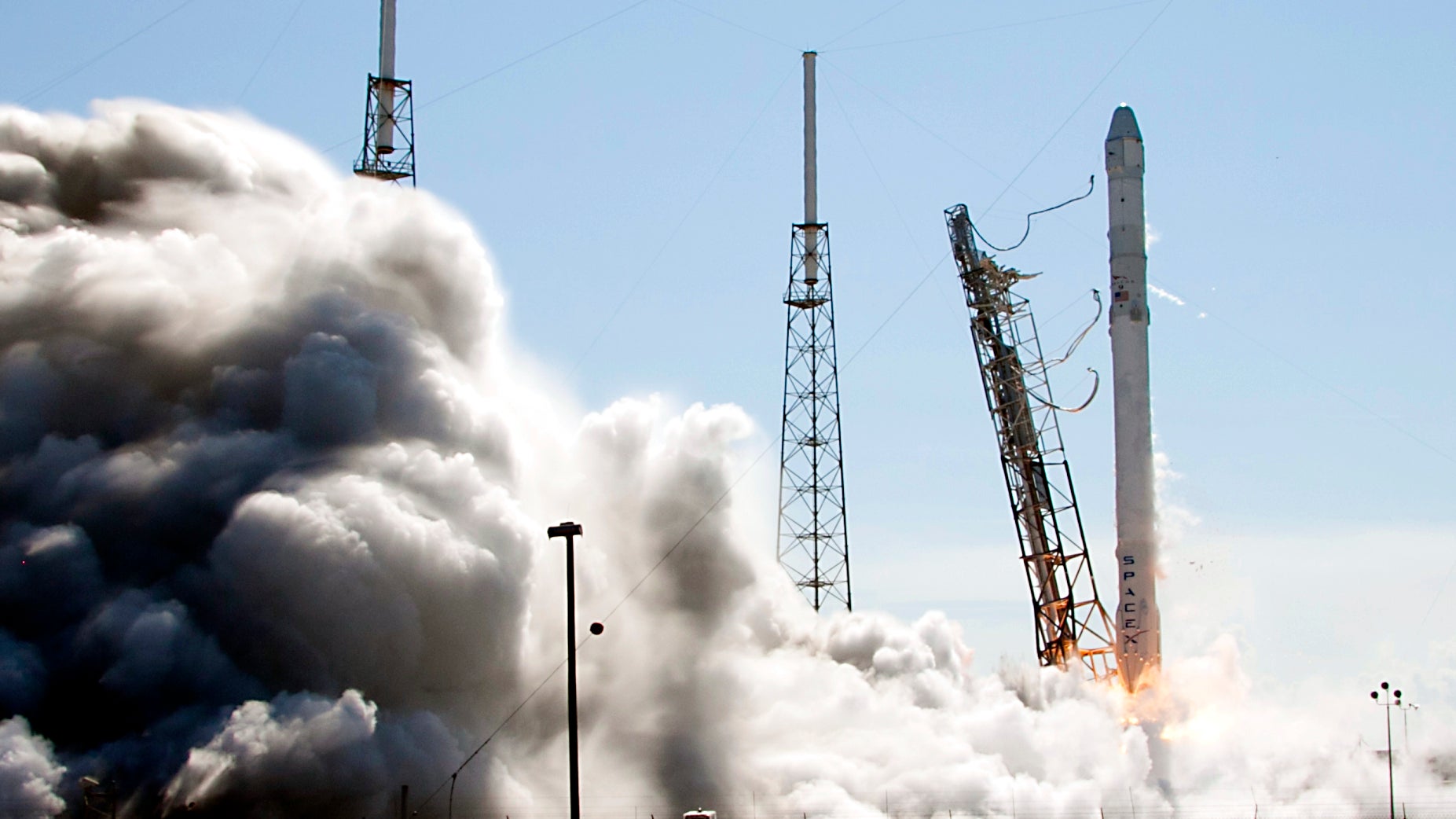Elon Musk’s SpaceX will attempt to pick up the pace of its launches, starting ASAP
This year will test SpaceX’s ability to deliver its clients’ cargo to space multiple times a year on a regular schedule—to maintain a high launch tempo, in the parlance of the business. Think of it as akin to Chipotle’s burrito velocity problem—after all, both companies are trying to deliver aluminum-wrapped tubes to their clients as fast as possible, just on a different scale.


This year will test SpaceX’s ability to deliver its clients’ cargo to space multiple times a year on a regular schedule—to maintain a high launch tempo, in the parlance of the business. Think of it as akin to Chipotle’s burrito velocity problem—after all, both companies are trying to deliver aluminum-wrapped tubes to their clients as fast as possible, just on a different scale.
Update (2/25): Today’s launch was aborted 1 minute 41 sconds before ignition; it’s not clear what caused the hold or when an attempt will be made again. SpaceX’s launch—the second scheduled in 2016—had aimed to put a Boeing-built broadcast satellite into high-earth orbit to send television broadcasts to customers in India, Indonesia, and the Philippines on behalf of SES, the European satellite giant.
Last year, Elon Musk’s space firm only launched six rockets. The explosive failure of a mission to the International Space Station in June created major delays that cost SpaceX hundreds of millions of dollars in lost revenue.
While the company has proven its ability to produce an effective, low-cost rocket, it must conduct launches far more regularly to gobble up further share of the space-access market. SpaceX’s two main commercial competitors, ULA in the United States and Arianespace in Europe, each launched 12 rockets in 2015. This year, ULA is hoping to launch 16 rockets.
SpaceX this year has at least 11 more anticipated launches of its Falcon 9 rocket, including commercial satellite launches, missions to resupply the International Space Station, and tests of its crewed spacecraft, Dragon II. It may also begin test flights of the Falcon Heavy, its next-generation rocket.
Besides manufacturing and testing enough engines, stages, and fairings to meet these needs, SpaceX needs to solve tricky coordination problems with its clients and with the US government. Earlier this month, a team of SpaceX executives, engineers, and attorneys met with the Federal Communications Commission to figure out how to speed up authorization for SpaceX to use special frequencies to communicate with its rockets during launches and during the attempted recovery of rocket stages.
The aftermath of last year’s explosive failure is still costing SpaceX. Originally planned to launch last fall, this SES-9 satellite was going to use its own electronic thrusters to slowly move itself into its final orbit over the course of several months. But the delays have cost SES sufficiently that it has asked SpaceX to put the satellite in a higher orbit so it will be operational faster. (For a sense of the territory we’re talking about, take a look at our map of all the satellites and scroll up to geo-stationary orbit.)
The extra fuel used in this maneuver means the rocket will be unable to attempt another landing at Cape Canaveral. (SpaceX’s success with that maneuver in December marked the first operational rocket stage to land vertically on earth.) This time around, SpaceX will look to land the first stage of the rocket on a floating droneship platform in the Atlantic ocean, something the company came so close to executing last month before its third explosive miss.
SpaceX officials say that the velocity reached while returning from such high altitude, along with limited fuel reserves, make a successful landing particularly unlikely. Look out for a cool video, at least.